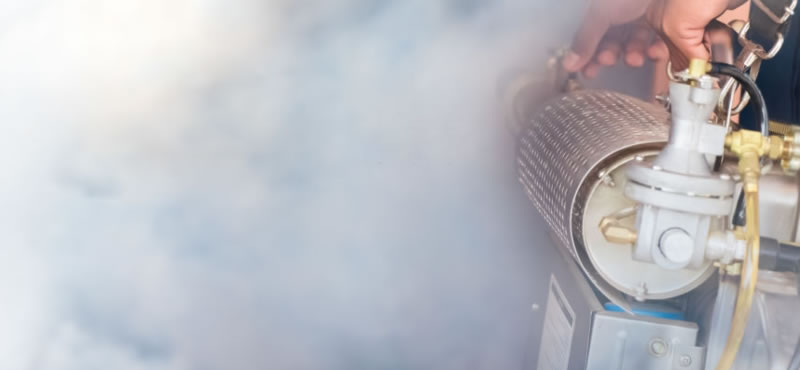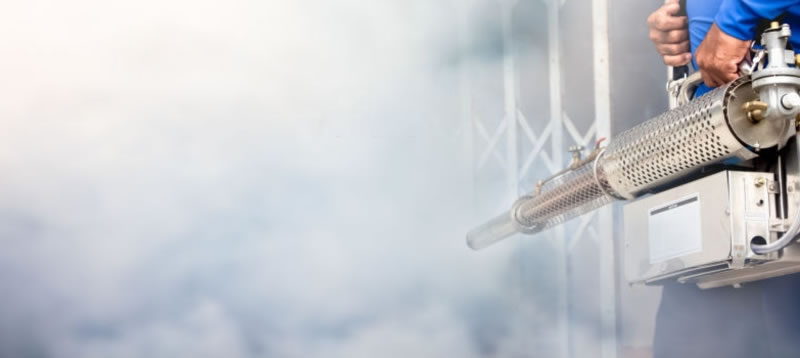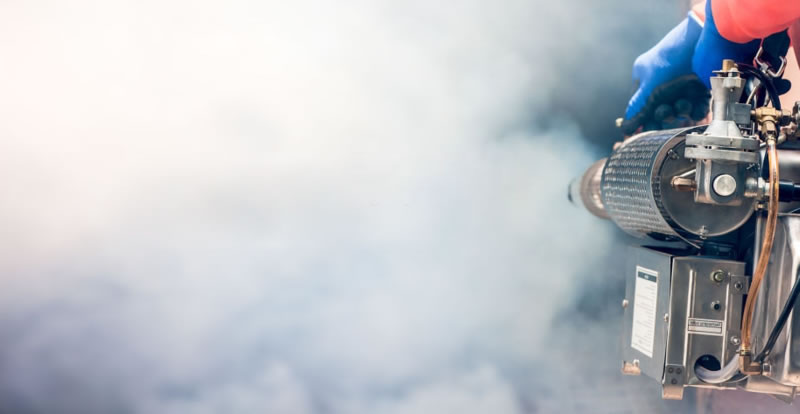How Does Fumigation Work?
If you notice a few pests, like termites in your home, that should be an alarm bell. It is best to get a pest control expert out to evaluate the house immediately. Termites in the home can wreak havoc as they feed on wood.
If your house contains wooden structure work, you’re at serious risk. In some cases, a pest control expert will recommend a few local treatments. That means applying a foam or a spray to a particular area of your home. This short term solution will combat any active infestations in that area.
However, if the termites and pests are widespread in your house, you will need to fumigate immediately. This involves releasing toxic gas into the house and allowing it to penetrate all of the wooden structures. It means you have to vacate the house, along with all your of your pets and any indoor plants.
What Does The Fumigation Process Entail?
- First, you have an inspection of your home. It is imperative t use a licensed professional because termites are highly evasive. That means it can be difficult to detect them. A licensed est controller will make use of specialised equipment to detect the heat and the noise of the termites. This gives an accurate indication of the termites’ location and the severity of an infestation.
- Next, you schedule your fumigation. It can take between 6 hours and 4 days to complete the process. You will need to vacate the house. Your pest control expert will seal the entire house using nylon. In some cases, tenting may be a better option. The house is then pumped with toxic gas. The gas has to remain in the house for long enough to fully penetrate into the wooden structures.
- Once this is complete, the service provider sets up a ventilation system. The gas is actively removed from the house. This is an important part because it ensures your family will be safe when they re-enter. Once the ventilation is complete, an air quality test confirms whether the house is safe to enter and occupy. You can ask for a copy of this test, it is an official document.
How Does Fumigation Work?
Fumigations are especially effective for treating dry wood termites. This type of termite is always difficult to treat. It doesn’t create mud tunnels and it doesn’t live in the ground. They burrow into wood. As a result, liquid soil treatment often doesn’t affect them. They gain entry into your home and thanks to their burrowing, they remain undetected.
Fumigation will deprive these dangerous termites of oxygen. The gas will exterminate termites that out of sight, deep in the wood. The reason the fumigation takes so long? To ensure the fumigant can penetrate the wood properly. It has to remain in the air to take proper effect. That said, it is the aeration step that takes the longest.
Fumigation is only effective when qualified professionals handle the task. There are specific fumigant concentrations to adhere to. This undergoes testing throughout the process to ascertain the best time to begin aerating. Termites are very resistant to fumigants, someone who is not qualified will not manage to achieve the necessary outcomes.
Termite Treatments: Tenting And Fumigating
Tenting and fumigating is a very effective way to rid your house of termites and other pests. Different pest control companies have different prices. It will also depend on your house size, location, shape, and environmental factors. Prices range between $1000 and $4000, including the tent.
That said, tenting and fumigating is not a long term solution. It is a single treatment to eradicate pests from the house. The property will require ongoing maintenance to prevent future attacks. Homeowners must also try to remove any feeding grounds and water sources that attract termites and pests.
- Seal the house – the smallest cracks can lead to termites and insects getting into the house.
- Remove food sources – dishes should be clean and there should be no food scraps left in the house by the end of the day.
- Mend leaky faucets – any water leaks will provide insects and termites with the necessary moisture. This makes your house a comfortable zone for them to occupy.
- Pet food – Seal away pet food, it attracts insects. Store it ina sealable container or keep it in a double-bagged plastic bag.
- Employ preventative help – a fumigation specialist can also recommend the best way to put barriers and pest control preventative care in place. The best options will depend on your property and your lifestyle.
How Safe Is Fumigation?
Fumigators have to have a license to practice. The process is dangerous and can result in accidents, or they can simply fail to work. The fumigators will test the air during the procedure to monitor the fumigant levels.
They will also test the air following aeration. The fortunate quality of termite fumigants is that they do not leave residues. That means your countertops, tables, beds, and other surfaces are safe. Aeration is the key element here. Once you have your aeration air quality certificate, the house is perfectly safe.
How To Prepare For A Fumigation
Your fumigators will guide you on the necessary steps to prepare for fumigation. However, it helps to know what to expect;
- Remove all pets from the house – this includes fish, rodents, critters like siders, as well as dogs and cats.
- Remove all plants from the house
- Seal all food – Either store in the refrigerator or seal it in nylon or plastic bags. Where possible, double bag the food. It might also help to cut down on purchasing groceries if you know you are going to fumigate soon.
- Seal all pet food – Pet food can go into airtight canisters or you can double-bag it to seal it from the air.
- Other consumables – items like alcohol should also remain sealed. Remember, the fumigant can penetrate the wood. It is not safe to store consumables in wooden drawers to protect them from the gas. This applies to tobacco and cigarettes too.



